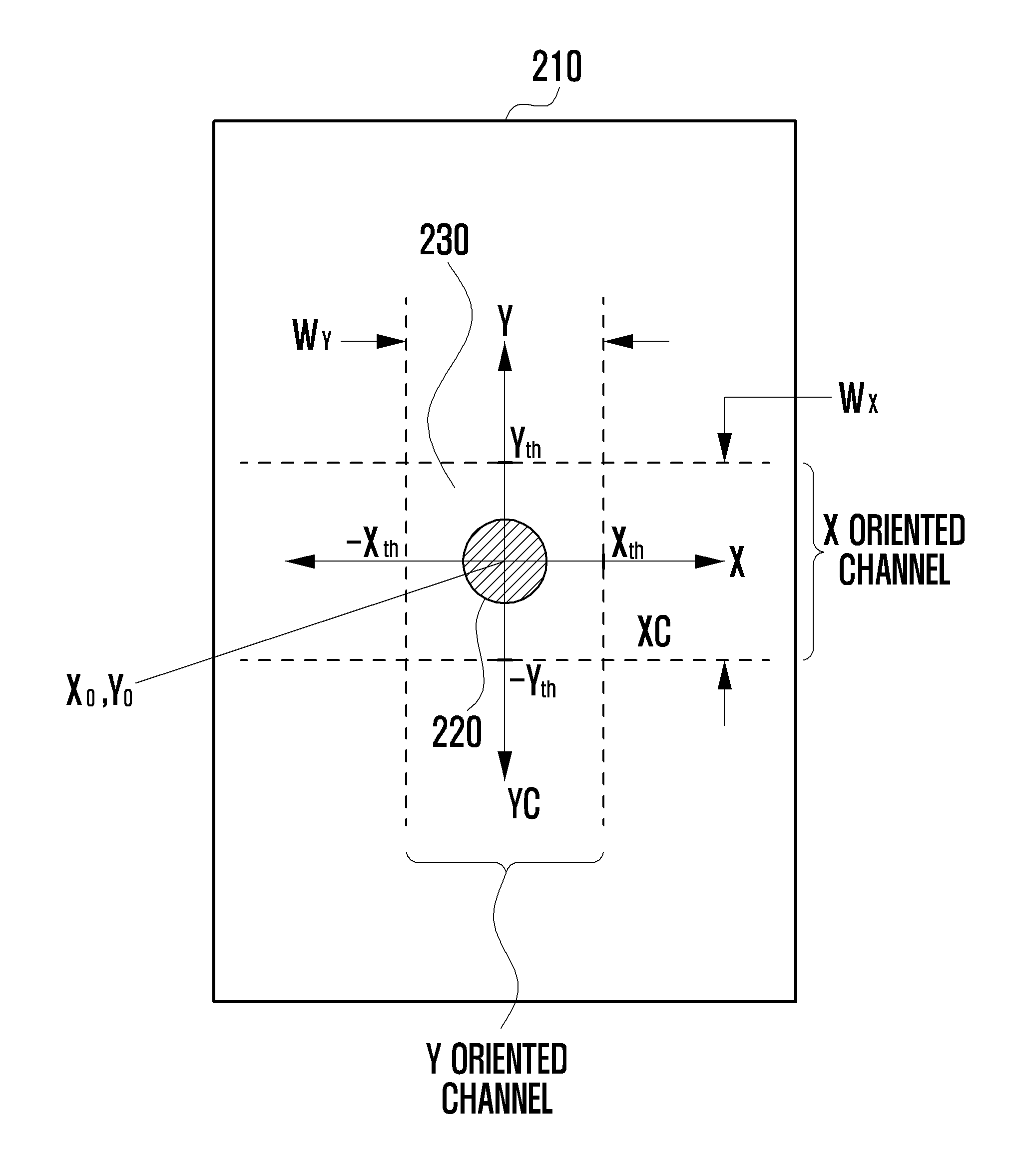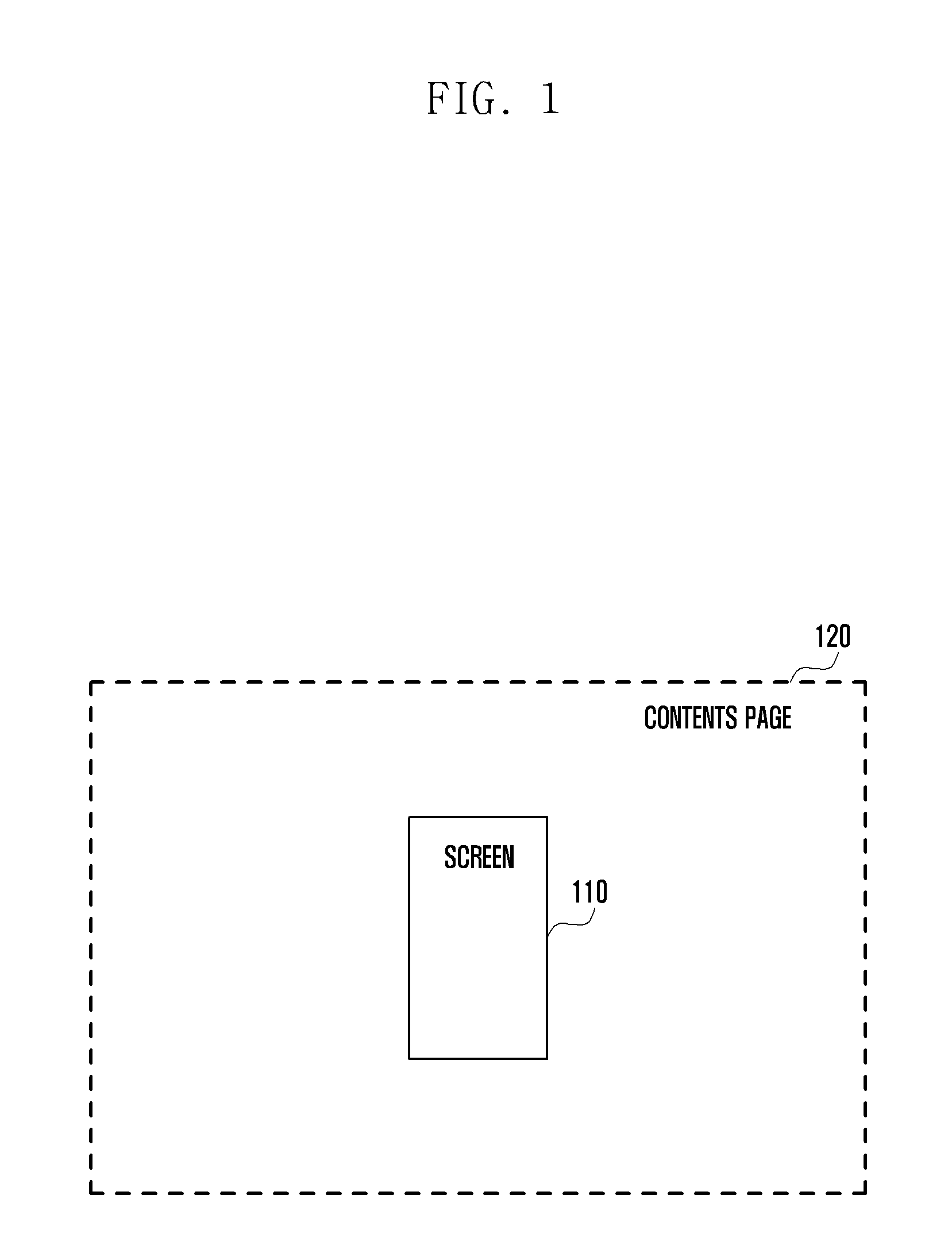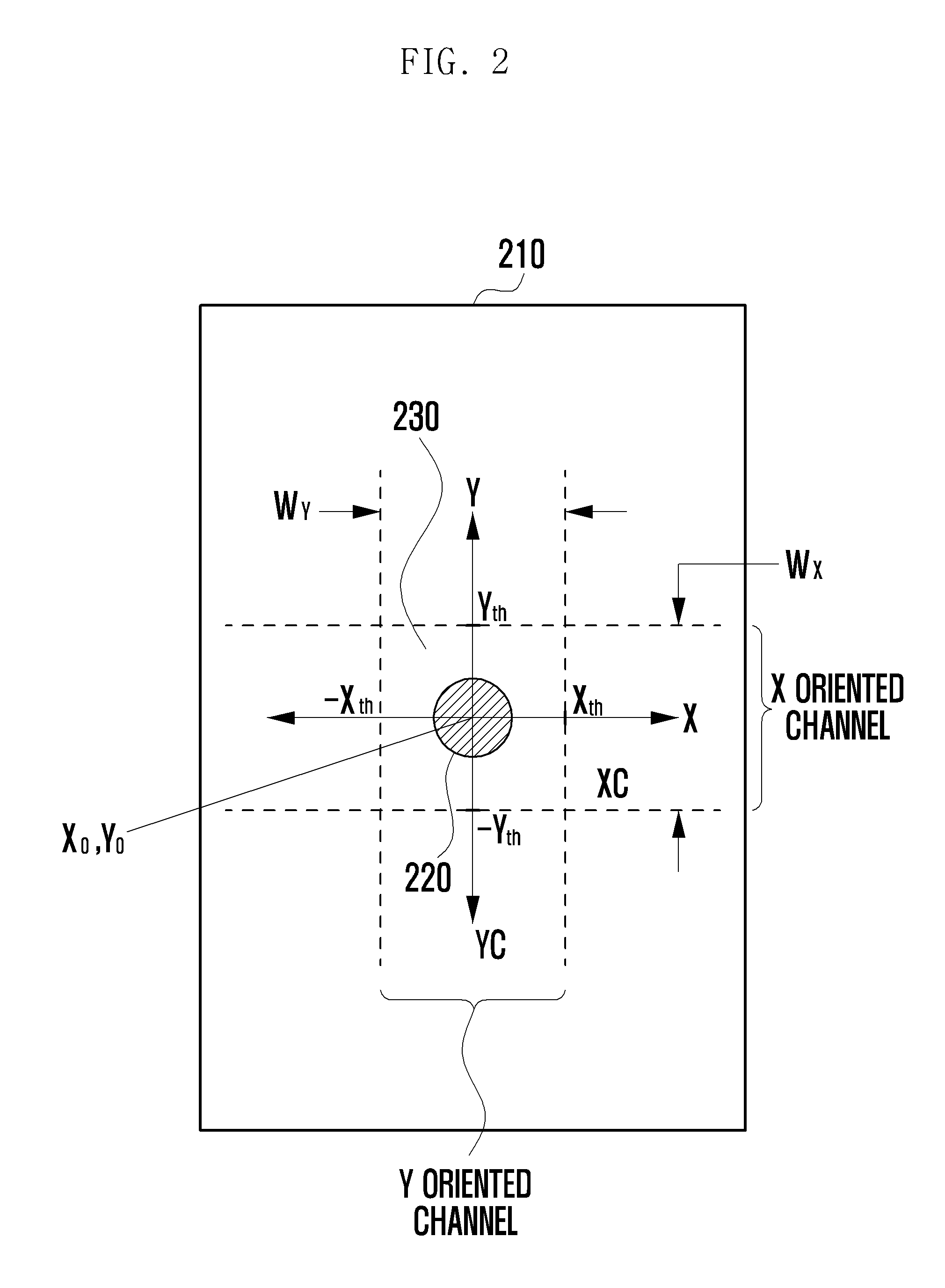Method and apparatus for moving contents in terminal
- Summary
- Abstract
- Description
- Claims
- Application Information
AI Technical Summary
Benefits of technology
Problems solved by technology
Method used
Image
Examples
first embodiment
[0051]FIG. 8 is a flowchart illustrating a method for moving contents according to the present invention. At (801) a display unit 630 displays a part of contents whose size which is larger than that of a screen on the screen under control of a controller 670.
[0052]That is, the display unit displays a portion of a contents page that, at a current zoom level, cannot be simultaneously displayed in its entirety on the touch screen 610. The controller 670 detects location change of a touch with respect to the screen 610 (802). When the location change is detected, the controller 670 detects a current touched point (xn, yn) (803). Here, there are various methods of accurately detecting the current touched point. For instance, the controller 670 may suitably sample and average a location value of an area of the touch input from the touch screen 610 to detect a current touched point. Further, the controller 670 computes a location change amount (Δx, Δy) from a starting point, namely, a firs...
second embodiment
[0059]FIG. 9 is a flowchart illustrating a method for moving contents according to the present invention. This embodiment differs from that of FIG. 8 by distinguishing, after a scroll without a touch release (step 901), whether a drag continues moving or stops in a touch contact state. If a STOP is detected, X and Y thresholds (e.g., X and Y channel widths) are reset to initial values. Otherwise, no resetting occurs.
[0060]At (901), the display unit 630 displays a part of contents on a screen. The controller 670 detects location change of a touch with respect to a touch screen 610 (902). When the location change is detected, the controller 670 sets a starting point (903). The starting point may be a first touched point (x0, y0) at the beginning. Further, when there is no location change of the touch in a current touched point (xn, yn) for a predetermined time after movement of the touch, the controller 670 may reset the current touched point (xn, yn) as the starting point. The contro...
third embodiment
[0066]FIG. 11 is a flowchart illustrating a method for moving contents according to the present invention. Referring to FIG. 11, a display unit 630 displays a part of contents on a screen under control of a controller 670 (1101). The controller 670 detects location change of a touch with respect to a touch screen 610 (1102). When the location change is detected, the controller 670 detects a current touched point (xn, yn) (1103). The controller 670 sets an immediately previous detected touch point (xn−1, yn−1) as the starting point (1103). The controller 670 computes a location change amount (dx, dy) from a previous touched point (xn−1, yn−1) to the current touched point (xn, yn) (1103). After that, the controller 670 compare an X axis change amount dx and a Y axis change amount dy with an X axis threshold Xth and a Y axis threshold Yth, respectively.
[0067]The controller 670 determines whether both of dx and dy are less than or equal to corresponding thresholds, respectively (1104). ...
PUM
 Login to View More
Login to View More Abstract
Description
Claims
Application Information
 Login to View More
Login to View More - R&D
- Intellectual Property
- Life Sciences
- Materials
- Tech Scout
- Unparalleled Data Quality
- Higher Quality Content
- 60% Fewer Hallucinations
Browse by: Latest US Patents, China's latest patents, Technical Efficacy Thesaurus, Application Domain, Technology Topic, Popular Technical Reports.
© 2025 PatSnap. All rights reserved.Legal|Privacy policy|Modern Slavery Act Transparency Statement|Sitemap|About US| Contact US: help@patsnap.com



